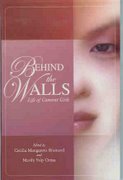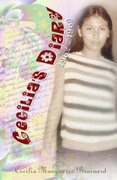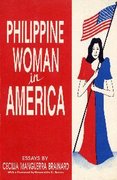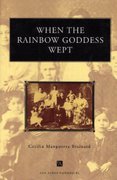In Luxor, we boarded a boat, the Royal Lotus, for a three-night river cruise on the Nile. It was interesting to see how the boats docked along the Nile. Sometimes three boats would sit side-by-side and passengers had to cut through the reception area of the other boats to get on or off the boat. The accomodations were all right, not great, but all right. The room was nice; but comparing the Royal Lotus with the Princess Cruise Lines the Royal Lotus pales. The buffet meals were not great; the staff was sometimes rude or at least lacking in finesse that the Princess staff have. And - this is a small matter but irritating - on the first day we were on the boat, I asked about the price to use the internet, and the fellow at reception quoted $5 per hour. The next day, when I went to use it, he said it was $6. I reminded him about the $5 quote, and he gave me some story about the sudden increase in price.
Perhaps from the poverty of the people, vendors and service people tended to be grasping for the dollar (sinking as it was). Another matter: our Tour Guide informed us that we had to give an Egyptian pound to the bathroom attendants. Later we learned that this was if you used the toilet paper they handed you. Also, people could just give 50 piastres, instead of an Egyptian pound. There was a constant demand for tips, and some people were extremely demanding. At times, it was a relief to have our Tour Director act as a buffer between us and others. She could silence some pushy vendor with a couple of Arabic sentences, while we had to deal with scarves and other goods flounted in front of our faces.

It was pleasant to float down the Nile. One could see the farms along the sides, the villages, the crumbling temples, the changes in terrain as it got drier. The area near the Nile was generally green, but further out, it could get viciously dry and sandy.
We visited more temples. In Edfu, we took a horse drawn carriage to the Temple of Horus, the falcon god. This temple had Roman influence and had been built when Cleopatra was around 2,000 years ago - young by Egyptian standards. It was a particularly hot day and I remember covering up to protect myself from the fierce sun. There were numerous tourists, so between the heat and the crowd, it was difficult taking in what the temple had to offer. This temple had niches for essential oils, and the hieroglyphics and pictures on the walls indicated which oils were stored inside. The priests had a huge area where they adorned and anointed themselves before entering the altar area. This particular temple also showed some Crosses etched on the walls in the area used as a church. Our Muslim Tour Guide talked about how the early Christians defaced the ancient temples. But it just wasn't the early Christians who did this, because Pharaoh Ramses II was big on replacing earlier pharaoh's names with his. Of course, we have the grave robbers who for centuries have been looting the pharaoh's funerary sites.
The Temple Kom Ombo is dedicated to the crocodile and falcon gods.
Click here for a site with a list of Egyptian gods and goddesses. The temple grounds had a deep pool wherein a crocodile used to be kept. There were mummified crocodiles but the line was too long and we didn't see these. This particular temple had a section in the back that had been used as a hospital, and the wall showed drawings of medical instruments and a woman on a birthing chair. Another wall showed a calendar; the ancient Egyptian year consisted of 36 10-day weeks, plus 5 festival days. The wall also showed the scheduled duties of the priest throughout the year.

We went through a canal lock and while waiting for our turn, there were little boats with vendors that clustered around. The boat vendors were selling their tablecloths, scarves and galabiyas to the people on the top deck, and parcels were thrown up to the top deck. It was fun to watch. Some of the people in this part of Egypt were Nubians, dark, lean, tall, handsome people. A famous Egyptian queen who was Nubian was Queen Nefertari, a favorite wife of Ramses II, for whom he made a temple in Abu Simbel - but I am jumping ahead of myself.
We disembarked in Aswan and transferred to the lovely Elephantine Island Resort hotel - yes, it's on an island and accessible by ferry. In Aswan, we visited the pink granite quarry where we saw the Unfinished Obelisk. It had a flaw and was left incomplete giving modern people the chance to see how the ancient peoples made such an obelisk. It is fascinating to see this huge piece sitting in the quarry. The question going through our minds was: how did the ancient people move an obelisk of this size to the temples? We are talking of 150 feet, and 1,150 metric tons!
Here is a site that discusses moving such an obelisk.
In Aswan we visited a factory that makes Essential Oils and I picked up four scents: Lotus, Papyrus, Summer Jasmine, and Flower of Sakkara. The scents are delicate and subtle, really quite pleasing.
In Aswan we also visited the Temple of Isis which had been transferred from the Island of Philae to higher ground. With the building of the Aswan Dam, water rose, flooding many of these temple sites. The Egyptian government and Unesco saved the Temple of Isis by moving it to higher ground, a task that was an engineering feat in itself.
To tell the truth, by this time, we were having "temple-itis." The heat and crowds of tourists were sometimes too much. Visiting temples as we did - quickly, without time to really observe and study details - the temples started to blend together. So right now, I'm having a difficult time remembering details about this temple, which is said to be one of the greatest temples in Egypt, but
here's a site if you want to know more about it.

We went on a felucca boat ride, but there was no wind, and sadly, our felucca had to be towed. We also visited a Nubian village where we saw their homes with sand floors and, oh, the charming camels rushing home in the early evening.

The last temples we saw were in Abu Simbel. This was one morning when we had one of those 4 a.m. wake up calls. We had to catch the plane and get to the site before it got too hot. It was excruciatingly hot anyway and the tourists were as (pardon the cliche) thick as flies. Ramses II, who loved a good press, built two temples, one to honor himself, and one to honor his Nubian wife, Nefertari. Of course Nefertari's temple is slightly smaller. These temples had also been transferred to higher ground. The size of the temples are mind-boggling. The temple of Ramses showed battle scenes between Ramses and his army and the Nubians, with Ramses the victor of course, one foot on an enemy while he slaughters another man. The Temple of Nefertari shows a lovely image of Nefertari and two attendants, tall, willowy, handsome women.
Here is a site with information about Abu Simbel.
One problem we had was that our Tour Director wasn't always with us to point out details and to discuss matters. She would talk before releasing us to these places, and oftentimes we didn't know what to look out for.
Our last day in Cairo was spent visiting the Old section. Earlier in the tour, we had visited Saladin's 12th century Citadel, the Alabaster Mosque, and stopped by the bazaar. Now we visited the synagogue,
the hanging Church and the
Church of Saints Sergius and Bacchus where the Holy Family had taken refuge during their flight into Egypt.
We stayed in the Fairmont Heliopolis for our final night. It's a large, flashy hotel with a lot of amenities - pool, sauna, nice reception area - but our room didn't have hot water, and heaven-help-me, this is true, the bed I lay on smelled bad. We only spent a few hours resting before leaving for the airport. We were going to board an El Al flight and had to be in the airport three hours before scheduled departure.
Tomorrow I'll get started on the Holy Land. I realize I'm zipping through these blog entries, but you can understand dear Readers, that I'm actually behind in everything and am trying desperately to get caught up. It's nice to think about the places I've seen though, so I don't mind blogging about the sites. I do have more thoughts actually about Egypt but simply do not have enough time to explore them in these blog entries.
Let me add that I thoroughly enjoyed the Grand Tour of Egypt. Egypt, like India, offers numerous ancient sites and a culture that is different and fascinating. It's a developing country, like India and the Philippines, and there's poverty and annoyances, but if you go there with a spirit of adventure, you'll get much from the place. I had gone to Egypt with some trepidation - the political situation, this is an Arab country after all - but that wasn't so much of an issue. Several times, people approached my American husband and in a friendly way said, "America, forever!" I thought the veiled women would be passive and subservient, but after seeing our Tour Guide - a veiled Muslim woman - show spunk, intelligence and sophistication, I understood that like all other places, Egypt has passive women as well as assertive ones. Our Tour guide said that many Arabic women like to visit Egypt because it's one of the liberal Arabic countries where they can watch belly dancing and enjoy themselves. As liberal as it may be, I suspect that Egypt is still a man's world. I should add that these observations came from a tourist who was insulated from the "real" Egypt.
~~~
Read also
Grand Tour of Egypt Part 1;
and
Grand Tour of Egypt Part 2
~~~
Tags: travel, Egypt, Luxor, Cairo, pyramids, Cecilia Brainard



































